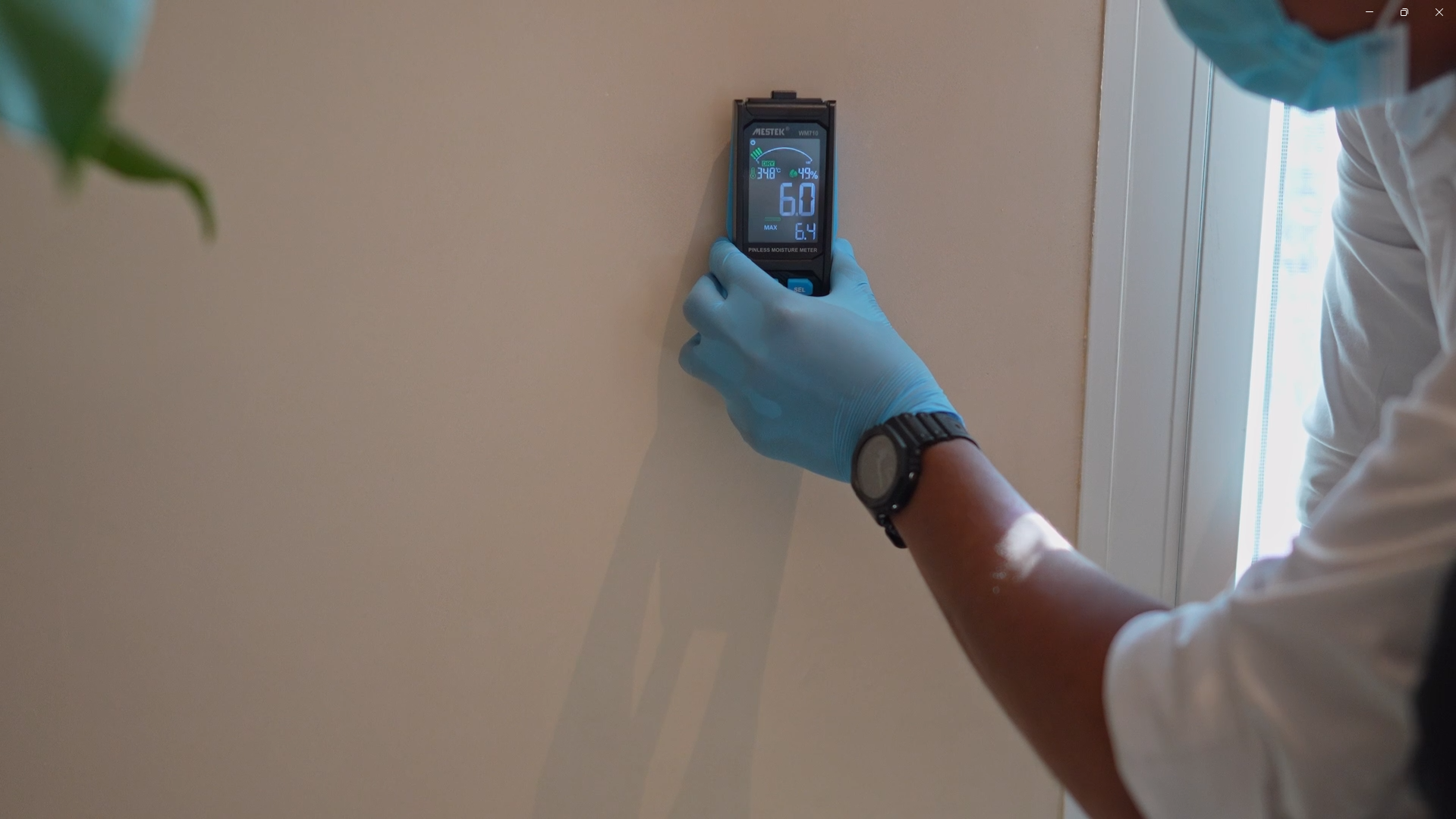
Understanding Mold Growth in High Humidity Environments
Introduction:
In regions like Dubai, where the climate can swing towards high humidity, especially during the winter months, the issue of mold growth becomes increasingly significant. Mold, a type of fungus that thrives in moist environments, poses not just a threat to structural integrity of buildings but also to human health. This white paper aims to delve into the dynamics of mold growth in high humidity environments, with a particular focus on its impact in indoor settings.
Understanding the nature of mold, its growth conditions, and its health implications is crucial for effective prevention and control. This paper will explore the biological makeup of mold, the specific conditions that lead to its proliferation in high humidity scenarios, and the potential health risks associated with indoor mold exposure. Additionally, we will discuss strategies to mitigate mold growth, emphasizing the importance of maintaining a healthy indoor environment, especially in regions experiencing seasonal humidity peaks like Dubai.
Through this comprehensive exploration, our objective is to equip readers with the knowledge needed to effectively combat mold growth in high humidity conditions, ensuring safer, healthier living and working spaces.
Section 1:
What is Mold?
Mold is a type of fungus, integral to the environment for its role in decomposing organic matter. Unlike plants, Molds do not undergo photosynthesis; they thrive by absorbing nutrients from their immediate surroundings. When mold spores, which are microscopic and airborne, infiltrate indoor spaces and land on damp surfaces, they can start to grow. This indoor mold growth is not just a structural concern but also a significant health hazard.
Common Types of Indoor Molds
Indoor environments are susceptible to various types of Molds. Aspergillus, often found on foods and in HVAC systems, is known for its potential to produce mycotoxins, which can be harmful to humans and animals. Cladosporium, typically appearing as a black or green substance, can grow on fabrics, woods, and other damp areas. It is one of the most common outdoor Molds but can easily migrate indoors. Sherbert’s chart arum, widely known as “black mold,” prefers consistently moist environments, such as those affected by water leaks. This type is notorious for producing mycotoxins, and its presence is often associated with “sick building syndrome”.
Conditions for Mold Growth
Moisture is the primary catalyst for indoor mold growth. Molds can colonize a variety of materials, including wood, paper, carpet, and insulation, when these materials remain damp. High relative humidity, above 60%, provides an ideal environment for mold growth. In regions like Dubai, where winters are marked by high humidity, and reduced use of air conditioning leads to less air circulation, these conditions are especially prevalent, creating prime environments for mold proliferation.
Section 2:
High Humidity as a Catalyst for Mold Growth
In high humidity environments, the amount of moisture in the air is significantly elevated, creating ideal conditions for mold growth. When the relative humidity indoors exceeds 60%, it provides a perfect breeding ground for mold spores. This is particularly true in regions like Dubai during the winter months, where humidity levels rise, and the use of air conditioning, which typically helps to dehumidify indoor air, is reduced.
Mechanisms of Mold Spore Proliferation in Humid Conditions
Mold spores are naturally present in the air but remain dormant until they encounter a moist surface. High humidity conditions provide the necessary moisture for these spores to activate and grow. Mold can grow on a variety of organic materials found in buildings, including wood, paper, carpet, and insulation, if there is moisture. The growth process begins when mold spores land on these damp surfaces and start to germinate, leading to the development of hyphae, which are long filamentous structures that form the mycelium, the main body of the mold.
Impact of Reduced Air Circulation in Winter
During the winter months in Dubai, the reduced reliance on air conditioning leads to less air circulation and filtration in indoor environments. This lack of air movement allows for more stable and high humidity levels, which in turn, facilitates mold growth. The situation is exacerbated in buildings with poor ventilation, where stagnant air contributes to increased moisture levels on surfaces, providing ideal conditions for mold colonization.
Section 3:
Health Risks Associated with Mold Exposure
Exposure to mold in indoor environments poses a significant health risk, particularly when it comes to respiratory issues. Individuals exposed to mold can experience a range of symptoms, including nasal stuffiness, throat irritation, coughing or wheezing, eye irritation, or, in some cases, skin irritation. For those with mold allergies, reactions can be more severe. The presence of mold, especially certain toxic types like Sherbert’s chart arum, can lead to more serious health conditions such as allergic reactions, asthma episodes, and other respiratory complaints.
Vulnerable Populations
Certain groups are more susceptible to the adverse effects of mold exposure. This includes children, the elderly, and individuals with compromised immune systems or pre-existing respiratory conditions. Children exposed to mold in their formative years have a higher risk of developing asthma, especially if they have a genetic predisposition to the condition. The elderly, with their often-weakened immune systems, are also at a greater risk of respiratory complications from mold exposure.
Long-Term Exposure and ‘Sick Building Syndrome’
Prolonged exposure to mold can lead to a condition commonly referred to as ‘Sick Building Syndrome’ (SBS), where occupants of a building experience acute health and comfort effects that are linked to time spent in the building, but no specific illness or cause can be identified. Symptoms of SBS include headache, dizziness, nausea, eye, nose, or throat irritation, dry cough, dry or itchy skin, difficulty in concentrating, fatigue, and sensitivity to Odors. The correlation between SBS and chronic mold exposure underscores the importance of maintaining a healthy indoor environment.
Section 4:
Strategies for Reducing Indoor Humidity
Controlling indoor humidity is crucial in preventing mold growth. In regions like Dubai, where high humidity is prevalent during certain seasons, it is essential to maintain indoor humidity levels below 60%. This can be achieved using air conditioners and dehumidifiers. Regularly servicing HVAC systems ensures they operate efficiently and effectively reduce humidity. Additionally, improving ventilation, particularly in areas like kitchens and bathrooms where moisture is commonly generated, can significantly help in reducing humidity levels indoors.
Regular Inspection and Cleaning
Routine inspection and cleaning are vital in preventing mold growth. This involves checking areas prone to moisture accumulation, such as windowsills, under sinks, and around air conditioning units. Any leaks or water damage should be promptly repaired to prevent mold colonization. Regular cleaning, especially in damp areas, can prevent mold spores from settling and proliferating. It is also important to ensure that materials that have been water-damaged are either thoroughly dried or replaced.
Mold-Resistant Materials and Construction Practices
In areas with high humidity, using mold-resistant building materials can be an effective preventative measure. These materials are designed to resist moisture and thus reduce the likelihood of mold growth. Employing construction practices that mitigate moisture accumulation, such as proper sealing and the use of vapor barriers, is also beneficial in preventing mold infestation.
Section 5:
Case Study 1: Mold Remediation in a High-Rise Building in Dubai
A notable instance of mold remediation in Dubai involved a high-rise residential building experiencing widespread mold issues during the winter months. The building’s management implemented a comprehensive strategy, which included installing dehumidifiers in common areas, improving ventilation systems, and repairing leaks. Additionally, they conducted educational sessions for residents on preventing mold growth in their apartments. This comprehensive approach not only resolved the existing mold problem but also prevented future occurrences, demonstrating the effectiveness of combined preventive measures and resident education in managing mold in high humidity environments.
Case Study 2: School District in Florida Tackles Mold Issues
In Florida, a state known for its high humidity, a school district faced recurring mold problems in several schools. By implementing a district-wide program that focused on regular HVAC maintenance, the use of mold-resistant materials in construction, and frequent inspections, the district successfully reduced mold incidents. This case study illustrates the importance of regular maintenance and the use of appropriate materials in public buildings, especially in humid climates.
Case Study 3: Hospital in Southeast Asia Implements IAQ Standards
A hospital in Southeast Asia, situated in a region with a tropical climate, faced challenges with mold growth affecting indoor air quality (IAQ). The hospital management adopted international IAQ standards, which included controlling humidity levels, using HEPA filters in the HVAC system, and rigorous cleaning protocols. This proactive approach resulted in a significant reduction in mold-related issues, highlighting the effectiveness of adhering to established IAQ standards in healthcare settings.
Conclusion
The exploration of mold growth in high humidity environments, particularly in regions like Dubai, underscores a critical challenge in maintaining healthy indoor air quality. As this paper has highlighted, the proliferation of mold in such climates is not merely a seasonal inconvenience but a significant public health and structural integrity concern. The various sections of this paper have collectively shed light on the nature of mold, its growth mechanisms in high humidity conditions, the health implications of mold exposure, effective strategies for prevention and control, and real-world case studies demonstrating successful mold management.
Understanding the basics of mold – its types, growth conditions, and the environments in which it thrives – is the first step in addressing the problem. This knowledge is especially pertinent for high-humidity areas, where the winter months create an ideal breeding ground for these fungi. The health implications of mold exposure, ranging from minor irritations to severe respiratory conditions, particularly among vulnerable populations, emphasize the urgency of addressing mold issues. It is not just about property damage; it is about protecting people’s health.
Prevention and control strategies, such as maintaining lower indoor humidity levels, regular inspections, cleaning, and the use of mold-resistant materials, are key in combating mold growth. These measures, while simple in theory, require consistent implementation and public awareness to be effective. The case studies presented from Dubai, Florida, and Southeast Asia offer practical insights and prove that with concerted efforts, the challenges posed by mold in high humidity environments can be effectively managed.
In conclusion, mold growth in high humidity environments is a multifaceted issue that demands a comprehensive approach. It involves understanding the science of mold, recognizing the health risks, implementing preventive measures, and learning from real-world applications. As climates change and urban environments evolve, the insights gathered in this paper provide a roadmap for healthier, mold-free living and working spaces.
JV de Castro, IAC2
JV de Castro is the Chief Technology Officer at Saniservice, where he leads innovation in indoor environmental sciences, IT infrastructure, and digital transformation. With over 20 years of experience spanning architecture, building science, technology management, digital media architecture, and consultancy, he has helped organizations optimize operations through smart solutions and forward-thinking strategies. JV holds a Degree in Architecture, a Masters of Research in Anthropology, an MBA in Digital Communication & Media, along with certifications in mold, building sciences and advanced networking. Passionate about combining technology, health, and sustainability, he continues to drive initiatives that bridge science, IT, and business impact.







Leave a Reply